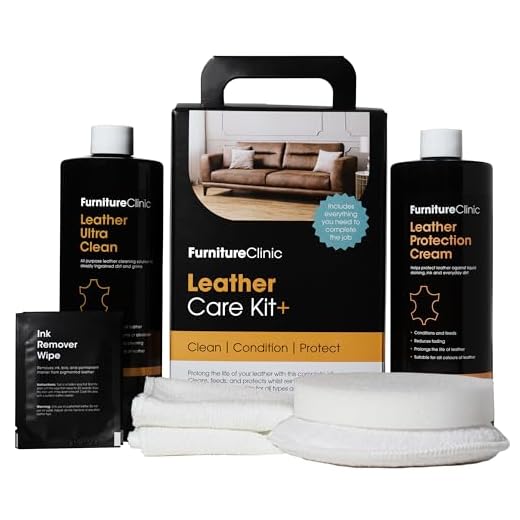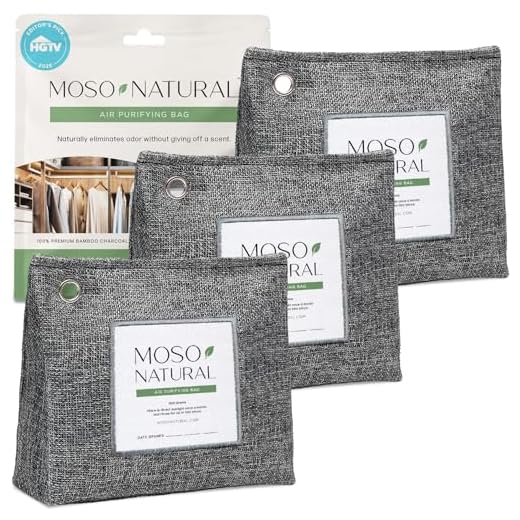




For stubborn odours lingering on your favourite seating, a simple mix of white vinegar and water works wonders. Combine equal parts in a spray bottle, lightly mist the affected areas, and allow it to air dry. The vinegar’s natural properties neutralise unwanted scents without damaging the material.
Next, sprinkle some baking soda generously over the surface. This household staple absorbs moisture and unpleasant smells effectively. Leave it on for several hours or overnight, then vacuum it up. You’ll be surprised at how fresh it can smell!
Regular maintenance is key. Using a soft, damp cloth weekly to wipe down surfaces helps prevent build-up of oils and dirt. Additionally, consider investing in a dedicated leather conditioner; this not only nourishes the material but also helps repel odours in the long run.
Lastly, don’t underestimate the power of fresh air. Open windows and allow your space to breathe, letting natural ventilation work its magic. With these steps, your beloved seating can remain a welcoming spot for both you and your furry companion.
Tips for Refreshing Your Furry-Friend-Infused Seating
First, gather the right materials: a soft cloth, white vinegar, water, and baking soda. Mix equal parts of vinegar and water in a spray bottle. Lightly spritz the surface with the solution, avoiding oversaturation.
Steps to Eliminate Odours
- Wipe the surface gently with the cloth to lift any residues.
- Sprinkle baking soda evenly across the affected areas. This natural deodoriser will absorb unwanted scents.
- Leave it for a few hours or overnight, then vacuum it up.
- If the scent lingers, repeat the process with the vinegar mixture.
Maintaining Freshness
- Regularly vacuum to remove pet hair and debris.
- Use a dedicated pet odour neutraliser for occasional deep cleaning.
- Consider placing an air purifier nearby to help maintain a pleasant environment.
These simple strategies can keep your seating area inviting and comfortable for both you and your furry companions.
Identify the Source of the Odour
First, assess the area around your furniture. Check for any lingering hair or debris that could be contributing to the scent. A thorough inspection often reveals hidden spots that are easily overlooked. Pay special attention to seams and crevices where fur tends to accumulate.
Investigate Potential Stains
Look for any discolouration or dampness that may indicate a previous accident. Urine marks tend to leave a distinct stain and odour. If you notice any, it’s crucial to treat these areas directly. Using a black light can help identify stains that are not visible to the naked eye.
Assess the Environment
Consider the surrounding environment. High humidity can exacerbate unpleasant scents. Ensure proper ventilation in the room, as stagnant air can make the odour more pronounced. Sometimes, the source may not be the upholstery itself but rather the space it occupies.
In my own experience, I found that the smell persisted not just from my pet but also from the surrounding fabric in the room. I had to look beyond the obvious to truly eliminate the issue.
Once you identify the source, you can take targeted action to address it effectively. Don’t underestimate the power of proper maintenance and regular checks to keep your space fresh and inviting.
Gather Necessary Cleaning Supplies
To tackle the unpleasant scent, gather the following items:
Basic Supplies
- Soft microfiber cloths
- Vacuum cleaner with upholstery attachment
- Bucket or bowl for mixing solutions
Cleaning Solutions
Consider these effective mixtures:
| Solution | Ingredients | Purpose |
|---|---|---|
| Vinegar Solution | 1 part white vinegar, 1 part water | Neutralises odours |
| Baking Soda Paste | Baking soda, water | Absorbs lingering smells |
| Commercial Cleaner | Leather cleaner (pet-safe) | Deep cleans and conditions |
Ensure all products used are safe for your furniture material to avoid damage. This preparation sets the stage for effective odour removal.
Test a Small Area Before Cleaning
Always check a discreet spot first. Choose a corner or an area that’s less visible. Apply your cleaning solution with a clean cloth or sponge, then wait for a few minutes. This helps to see if the material reacts well or if any discolouration occurs.
After the waiting period, examine the spot closely. If the surface remains unaffected, you can proceed with confidence. If there’s any change, it’s best to adjust your approach or even select a different product.
For a more cautious approach, consider diluting your cleaning mixture with water. This can prevent potential damage and still provide a level of freshness. Always keep in mind the importance of using pH-balanced solutions designed for delicate materials.
Testing ensures you maintain the integrity of your furnishings while addressing unwanted scents. It’s a simple step that can save you from further issues down the line.
Apply a Cleaning Solution to the Couch
Mix equal parts of vinegar and water in a spray bottle. Lightly mist the affected areas, avoiding saturation. The mixture neutralises odours effectively. Using a soft, lint-free cloth, gently wipe the surface in circular motions. This helps lift any embedded particles without damaging the material.
If the odour persists, consider adding a few drops of mild dish soap to the vinegar solution. Test this on a discreet section first to ensure it doesn’t alter the appearance. If all looks good, apply the soapy mixture similarly, using a cloth to scrub gently.
Afterwards, use a clean, damp cloth to remove any residue. This step is crucial; leftover solution can lead to discolouration over time. Follow up by drying the area with a soft towel, ensuring no moisture is trapped.
A commercial product designed for pet odours can also be beneficial. Look for enzymatic cleaners specifically formulated to tackle organic smells. Apply according to the manufacturer’s instructions, focusing on the problematic areas.
Once you’ve treated the surface, allow it to air out. Open windows or use fans to improve ventilation. This helps in dissipating any lingering scents, leaving the space fresh and inviting.
Neutralise Odours with Natural Remedies
For an immediate solution, sprinkle baking soda liberally over the surface. Let it sit for several hours, preferably overnight, before vacuuming it off. This simple trick absorbs unpleasant scents effectively.
Another option is white vinegar diluted with water. Mix equal parts in a spray bottle, lightly mist the area, and allow it to air dry. The vinegar scent dissipates quickly, taking other odours with it.
Essential oils can also be beneficial. A few drops of lavender or tea tree oil mixed with water can create a refreshing spray. Test on a small patch first to ensure it doesn’t alter the surface. Lightly misting the area can leave a pleasant fragrance without overpowering it.
Citrus peels, such as lemon or orange, can work wonders too. Place fresh peels in small bowls around the room to naturally freshen the atmosphere. Alternatively, you can blend the peels with water and use it as a spray.
If you have access to activated charcoal, placing it in a breathable bag nearby can absorb odours continuously. It’s a simple yet effective way to maintain freshness.
Lastly, ensure proper ventilation. Opening windows and allowing fresh air to circulate can significantly help reduce lingering smells. Regular air flow keeps the environment pleasant.
Maintain Your Leather Couch to Prevent Future Smells
Regular upkeep is crucial for keeping your upholstery fresh and inviting. Start with a soft, dry cloth to remove dust and debris weekly. This simple step prevents grime buildup and keeps the material in good condition.
Apply a conditioner specifically formulated for your type of upholstery every six months. This nourishes the surface, preventing cracks and ensuring it remains supple. Look for products that provide a protective barrier against moisture and stains.
Consider using a pet-friendly spray that helps neutralise odours and adds a pleasant scent without damaging the material. Test any new product in a discreet area first to ensure it doesn’t lead to discolouration.
Keep your furry companion’s grooming routine regular. Frequent baths and brushing reduce shedding and dander, minimising the chances of unpleasant smells lingering in your living space.
If your pet has dietary restrictions, opt for options like best low sodium dog food congestive heart failure. A balanced diet can influence their overall health and scent.
Lastly, ensure proper ventilation in your home. Open windows when possible and use air purifiers to maintain a fresh atmosphere. This approach not only benefits your upholstery but enhances your living environment overall.








